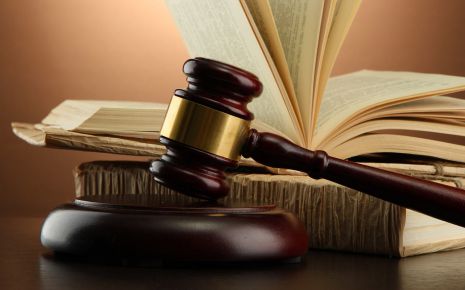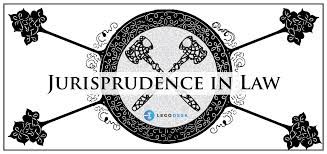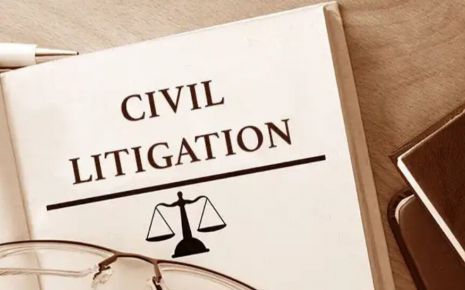When Power Meets Rights: Shankari Prasad v/s Union Of India Case and the Evolution of India's Basic Structure Doctrine
The Doctrine of Basic Structure evolved through series of verdicts in India, one
such case was of Shankari Prasad Vs. Union of India. This case was result of the
ongoing struggles between the judiciary for sovereignty in independent India and
the parliament for its power. Under this case question was raised of whether the
fundamental rights can be amended under Article 368 by the parliament or not.
The conflict between the amending power of the Parliament and the Fundamental Rights guaranteed by Part III of the Constitution of India could be regarded as one of the longest, but the most crucial ones in the history of Independent India. This conflict was instigated due to an underlying battle between Article 13 and Article 368 as well.
Facts:
This case was mainly triggered by certain land reforms like abolishment of zamindari system. Lands were mainly acquired by the zamindars during the British rule, and they used to hire laborers and poor farmers on their land and used to collect taxes from them for British. After the independence of India an act was passed to abolish zamindari system that was the Abolishment of the Zamindari System, this act was enacted in the states of Uttar Pradesh, Bihar, Madhya Pradesh.
The main motive to enact this act was to bring equality among all the citizens as per secured in Article 14 of the Indian Constitution. It was a major agrarian's land reform. Under such enactment tremendous property of land that the Zamindars hold was to be and rearrange them among the inhabitants. The zamindars felt distressed and filed several petitions across the state stating that this affected and violated their Fundamental right of property stated under Art. 19(f) by Part III of the Constitution.
The Allahabad and Nagpur High Court confirms the validity of this act as it was for the purpose to bring equality and to uplift the weaker and poorer section of the society but in contrary the Patna High Court in its judgement declares the Bihar Land Reform Act 1950, invalid and unlawful stating that it is violating the Fundamental Right.
In this respect, the Parliament passed the First amendment act 1951, through which Art 31-A (modification of rights) and Art. 31-B (protection of 9th schedule) was introduced further they inserted 9th schedule to protect the Land reform and other laws from judicial review which means the 9th schedule give immune to the laws from the judicial review i.e. it cannot be challenged in any court of India and is beyond the judicial review.
The zamindars filed a writ petition in the Supreme Court of India challenging the constitutionality of the First Amendment Act 1951 and is void in nature.
Issue Raised:
This Issue Presented Before The Apex Court, Had Mainly 3 Major Issues:
The counsel in Shankari prasad v. Union of India conferred that only the two houses of parliament have the power to amend the constitution, hence the provisional parliament was not competent to amend the constitution.
Further the counsel contented that article 368 is a complete and self-contained provision and does not allow any amendment to be made after a bill was introduced in both houses. The bill in the present case has been admittedly amended in several particulars throughout this house, therefore this Amendment Act cannot be said to have been passed with the procedure prescribed in Article 368.
Lastly the counsel in Shankari prasad case asserted that the land related matters fall in the list 2 of the 7th schedule, in which written that this law can only be made by state legislature, and the Parliament has no jurisdiction on this matter to make law on land matters.
Respondent's Argument:
The learned counsel representing the respondent in Shankari Prasad case pointed out the constitution provides for three classes of amendment of its provision:
Judgement:
The apex court held that the first amendment Act which added article 31-A, 31-B and 9th schedule was not violating the constitution of India.
Article 368 allows the interim Parliament to change the Constitution. The term "two Houses" in Article 368 does not suggest that the amending body is independent from Parliament; rather, it refers to both Houses of Parliament and the President.
The court ruled in the Shankari Prasad Case that the terms "all the powers conferred by the provisions of this Constitution on Parliament" in Article 379 do not refer just to the functions that the provisional Parliament, which consists of a single chamber, can exercise. They also include the ability to modify the Constitution, as guaranteed under Article 368.
In the Shankari Prasad Case, the court determined that, while the term "law" broadly refers to constitutional law, there is a significant contrast between ordinary laws formed through legislative power and constitutional laws created through constituent power. In the sense of Article 13, "law" refers to rules or regulations enacted by regular legislative power, rather than amendments to the Constitution enacted through constituent power. As a result, Article 13(2) does not apply to revisions made under Article 368.
Furthermore, the court held in the Shankari Prasad Case that Articles 31A and 31B, enacted by the Constitution (First Amendment) Act of 1951, do not limit the High Court's authority under Article 226 to issue writs to uphold rights granted by Part III of the Constitution, nor do they limit the Supreme Court's jurisdiction under Articles 132 and 136 to hear appeals related to the issuance or refusal of such writs. They merely exclude specific sorts of situations from the scope of Part III. As a result, these articles do not require ratification under the proviso to Article 368(b). The court held in Shankari Prasad vs Union of India that Articles 31A and 31B are not invalid because they pertain to land matters, which fall under the State List (list II)
Conclusion:
The case of Shankari Prasad v. Union of India was a landmark case and played a significant role in interpreting the constitution and helped in evolving and stablishing the Basic Structure Doctrine. The petitioner challenged the legality of the first amendment Act 1951, which added the 31-A and 31-B, addressing it as the violation of Article 19(f) of the constitution.
However, the Supreme Court of India ruled that the Parliament has the power to amend the constitution under article 368. The judgment of Shankari Prasad case has challenged many times and were finally reversed in the case of Golakh Nath v. State of Punjab. The doctrine of basic structure was inserted stating that the parliament has the power to amend any provision of the Constitution but cannot amend the basic structure of the Constitution. Reference:
The conflict between the amending power of the Parliament and the Fundamental Rights guaranteed by Part III of the Constitution of India could be regarded as one of the longest, but the most crucial ones in the history of Independent India. This conflict was instigated due to an underlying battle between Article 13 and Article 368 as well.
Facts:
This case was mainly triggered by certain land reforms like abolishment of zamindari system. Lands were mainly acquired by the zamindars during the British rule, and they used to hire laborers and poor farmers on their land and used to collect taxes from them for British. After the independence of India an act was passed to abolish zamindari system that was the Abolishment of the Zamindari System, this act was enacted in the states of Uttar Pradesh, Bihar, Madhya Pradesh.
The main motive to enact this act was to bring equality among all the citizens as per secured in Article 14 of the Indian Constitution. It was a major agrarian's land reform. Under such enactment tremendous property of land that the Zamindars hold was to be and rearrange them among the inhabitants. The zamindars felt distressed and filed several petitions across the state stating that this affected and violated their Fundamental right of property stated under Art. 19(f) by Part III of the Constitution.
The Allahabad and Nagpur High Court confirms the validity of this act as it was for the purpose to bring equality and to uplift the weaker and poorer section of the society but in contrary the Patna High Court in its judgement declares the Bihar Land Reform Act 1950, invalid and unlawful stating that it is violating the Fundamental Right.
In this respect, the Parliament passed the First amendment act 1951, through which Art 31-A (modification of rights) and Art. 31-B (protection of 9th schedule) was introduced further they inserted 9th schedule to protect the Land reform and other laws from judicial review which means the 9th schedule give immune to the laws from the judicial review i.e. it cannot be challenged in any court of India and is beyond the judicial review.
The zamindars filed a writ petition in the Supreme Court of India challenging the constitutionality of the First Amendment Act 1951 and is void in nature.
Issue Raised:
This Issue Presented Before The Apex Court, Had Mainly 3 Major Issues:
- Whether the First Amendment Act passed by Parliament is ultra vires?
- Whether the Parliament has the authority to amend the Fundamental Rights?
- Whether the term 'law' in Article 32(2) includes the constituent law?
The counsel in Shankari prasad v. Union of India conferred that only the two houses of parliament have the power to amend the constitution, hence the provisional parliament was not competent to amend the constitution.
Further the counsel contented that article 368 is a complete and self-contained provision and does not allow any amendment to be made after a bill was introduced in both houses. The bill in the present case has been admittedly amended in several particulars throughout this house, therefore this Amendment Act cannot be said to have been passed with the procedure prescribed in Article 368.
Lastly the counsel in Shankari prasad case asserted that the land related matters fall in the list 2 of the 7th schedule, in which written that this law can only be made by state legislature, and the Parliament has no jurisdiction on this matter to make law on land matters.
Respondent's Argument:
The learned counsel representing the respondent in Shankari Prasad case pointed out the constitution provides for three classes of amendment of its provision:
- Amendment that can be made by simple majority
- Amendment that required a special majority as specified in article 368
- Amendment that necessitates ratification by resolution passed at least by half of the state listed in part A and B of the first schedule, in addition to the special majority mentioned in the second category.
Judgement:
The apex court held that the first amendment Act which added article 31-A, 31-B and 9th schedule was not violating the constitution of India.
Article 368 allows the interim Parliament to change the Constitution. The term "two Houses" in Article 368 does not suggest that the amending body is independent from Parliament; rather, it refers to both Houses of Parliament and the President.
The court ruled in the Shankari Prasad Case that the terms "all the powers conferred by the provisions of this Constitution on Parliament" in Article 379 do not refer just to the functions that the provisional Parliament, which consists of a single chamber, can exercise. They also include the ability to modify the Constitution, as guaranteed under Article 368.
In the Shankari Prasad Case, the court determined that, while the term "law" broadly refers to constitutional law, there is a significant contrast between ordinary laws formed through legislative power and constitutional laws created through constituent power. In the sense of Article 13, "law" refers to rules or regulations enacted by regular legislative power, rather than amendments to the Constitution enacted through constituent power. As a result, Article 13(2) does not apply to revisions made under Article 368.
Furthermore, the court held in the Shankari Prasad Case that Articles 31A and 31B, enacted by the Constitution (First Amendment) Act of 1951, do not limit the High Court's authority under Article 226 to issue writs to uphold rights granted by Part III of the Constitution, nor do they limit the Supreme Court's jurisdiction under Articles 132 and 136 to hear appeals related to the issuance or refusal of such writs. They merely exclude specific sorts of situations from the scope of Part III. As a result, these articles do not require ratification under the proviso to Article 368(b). The court held in Shankari Prasad vs Union of India that Articles 31A and 31B are not invalid because they pertain to land matters, which fall under the State List (list II)
Conclusion:
The case of Shankari Prasad v. Union of India was a landmark case and played a significant role in interpreting the constitution and helped in evolving and stablishing the Basic Structure Doctrine. The petitioner challenged the legality of the first amendment Act 1951, which added the 31-A and 31-B, addressing it as the violation of Article 19(f) of the constitution.
However, the Supreme Court of India ruled that the Parliament has the power to amend the constitution under article 368. The judgment of Shankari Prasad case has challenged many times and were finally reversed in the case of Golakh Nath v. State of Punjab. The doctrine of basic structure was inserted stating that the parliament has the power to amend any provision of the Constitution but cannot amend the basic structure of the Constitution. Reference:
- AIR 1951 SC 458
Law Article in India
Legal Question & Answers
Lawyers in India - Search By City
LawArticles
How To File For Mutual Divorce In Delhi

How To File For Mutual Divorce In Delhi Mutual Consent Divorce is the Simplest Way to Obtain a D...
Increased Age For Girls Marriage

It is hoped that the Prohibition of Child Marriage (Amendment) Bill, 2021, which intends to inc...
Facade of Social Media

One may very easily get absorbed in the lives of others as one scrolls through a Facebook news ...
Section 482 CrPc - Quashing Of FIR: Guid...

The Inherent power under Section 482 in The Code Of Criminal Procedure, 1973 (37th Chapter of t...
The Uniform Civil Code (UCC) in India: A...

The Uniform Civil Code (UCC) is a concept that proposes the unification of personal laws across...
Role Of Artificial Intelligence In Legal...

Artificial intelligence (AI) is revolutionizing various sectors of the economy, and the legal i...








Please Drop Your Comments